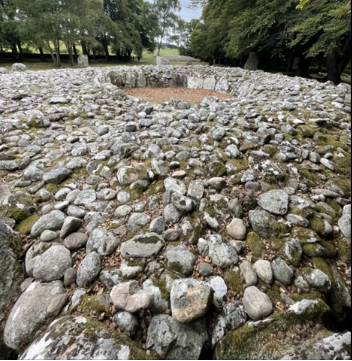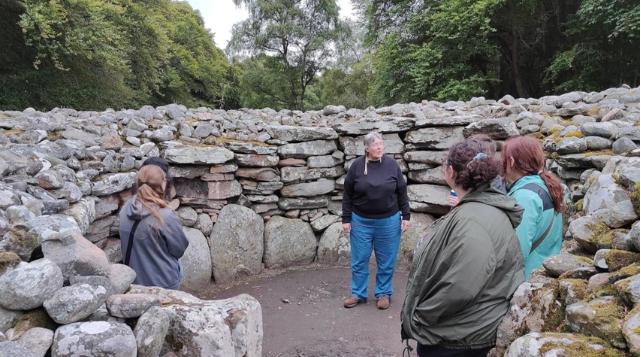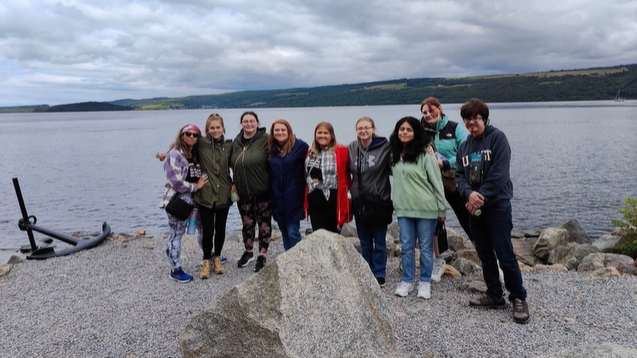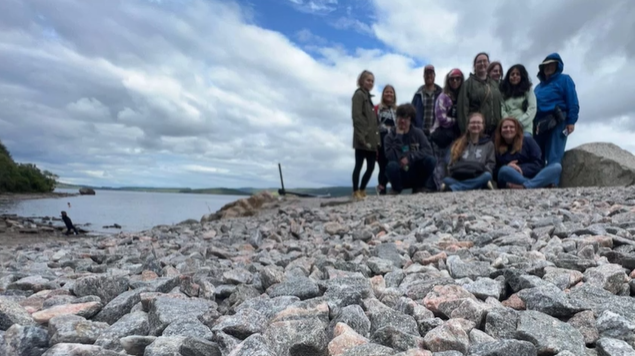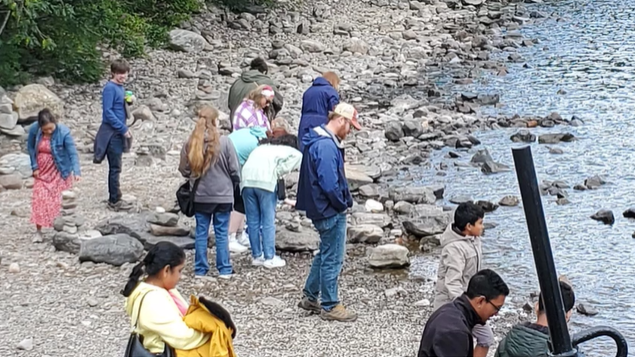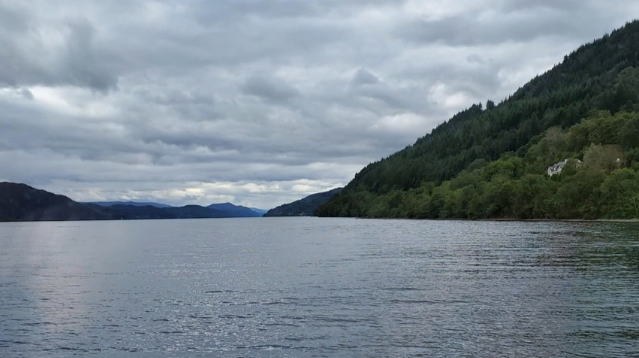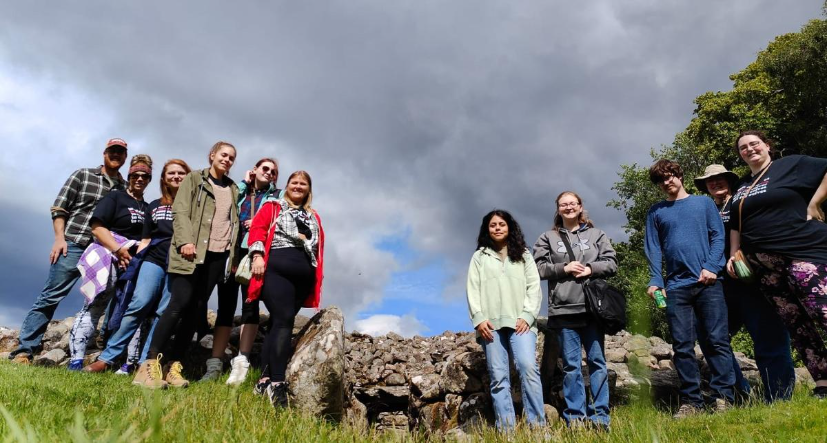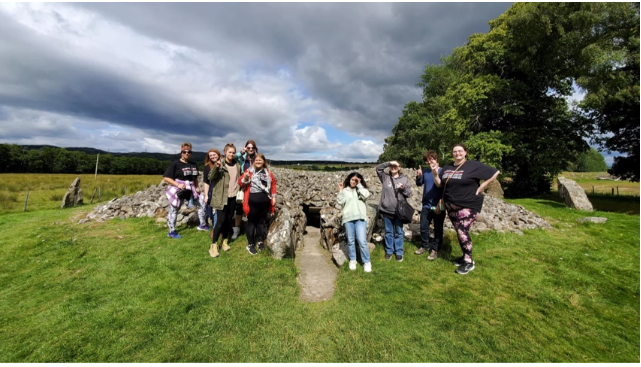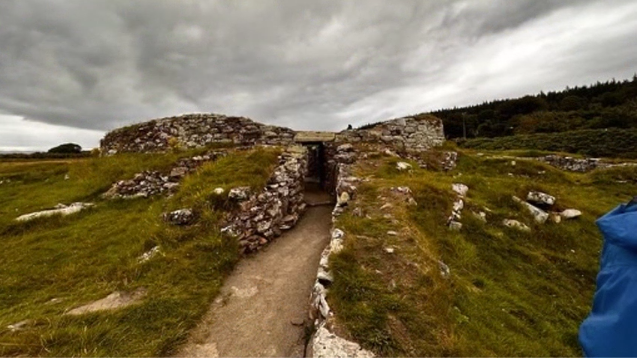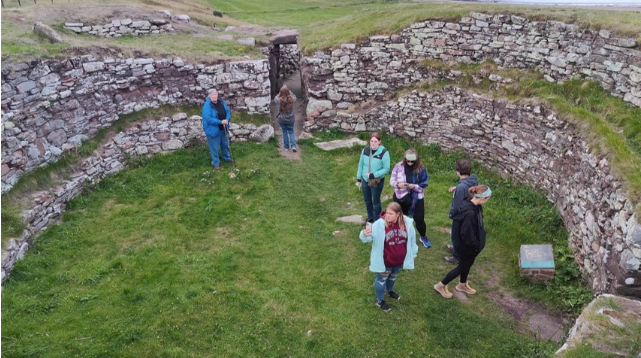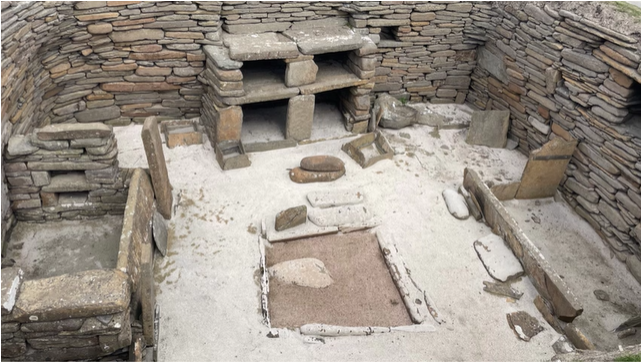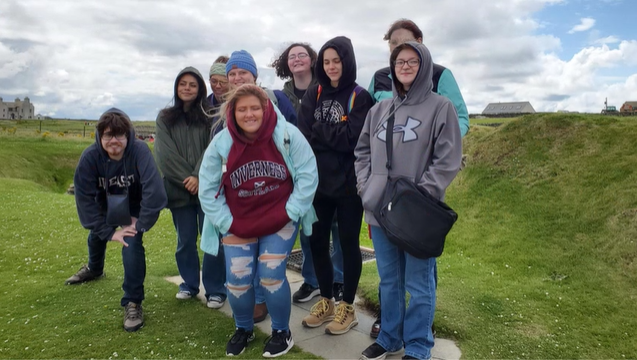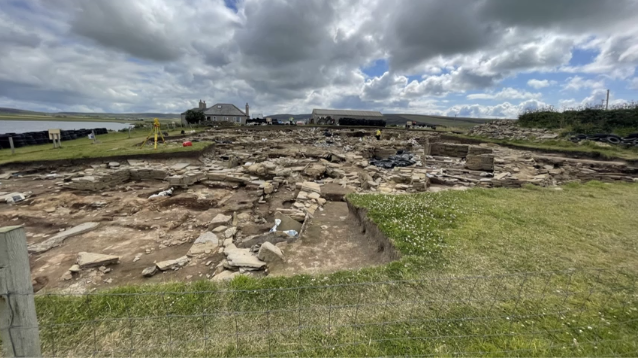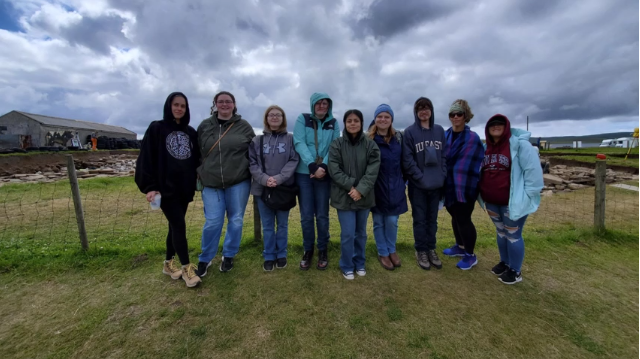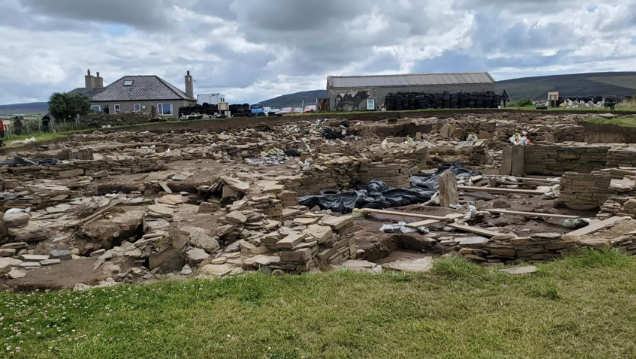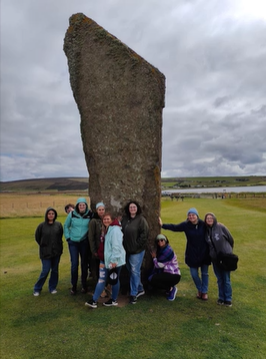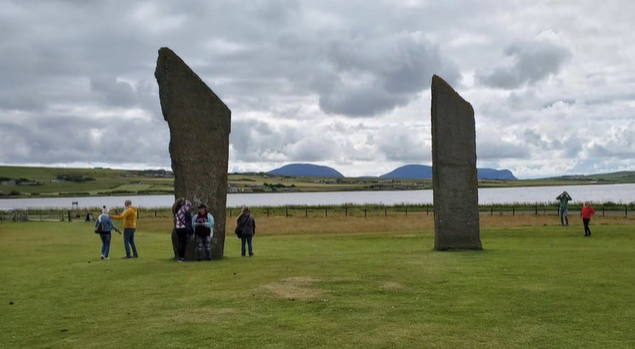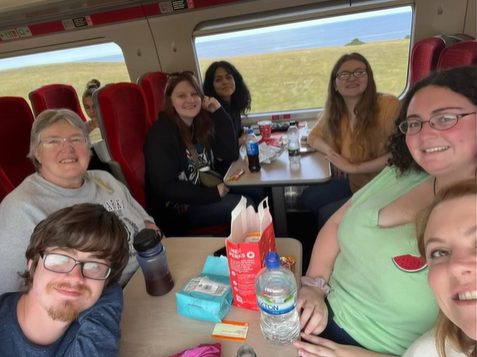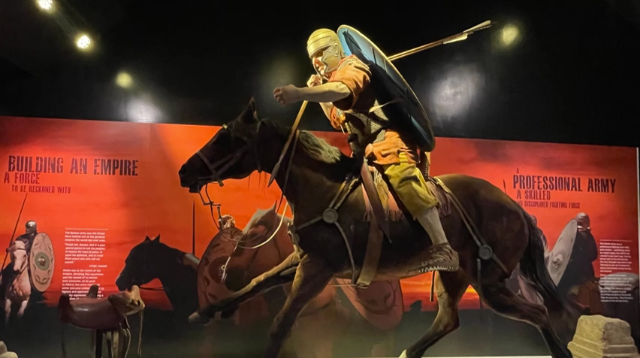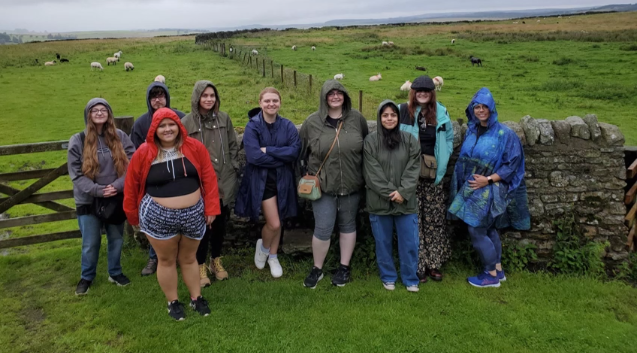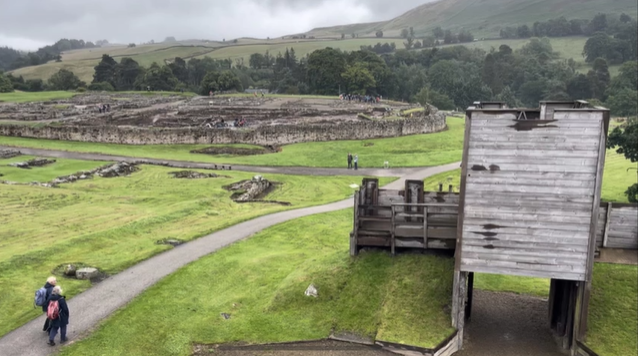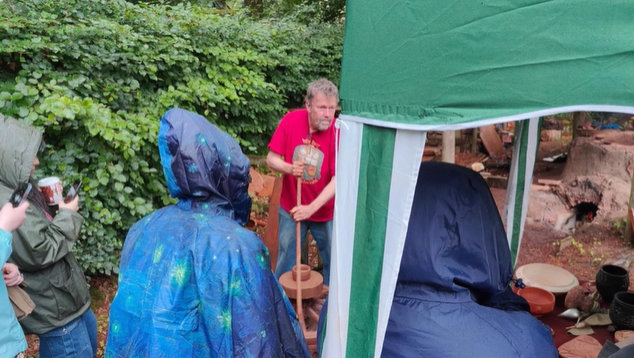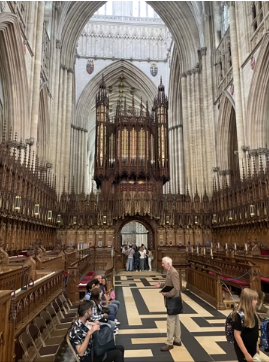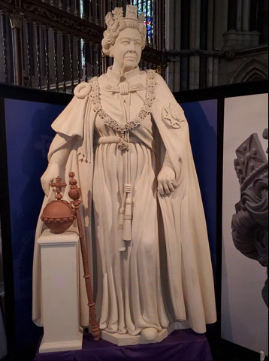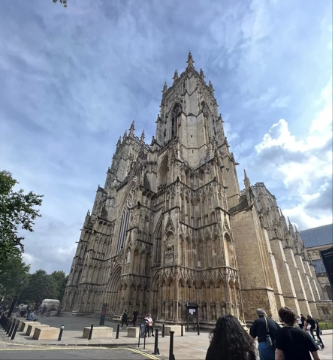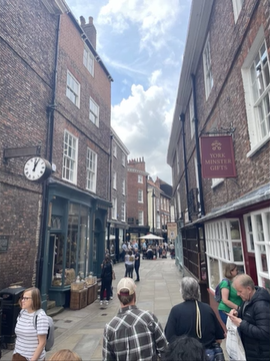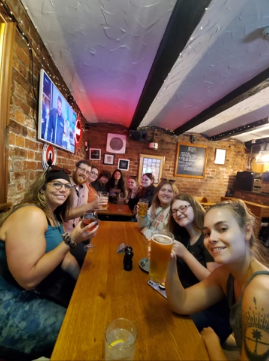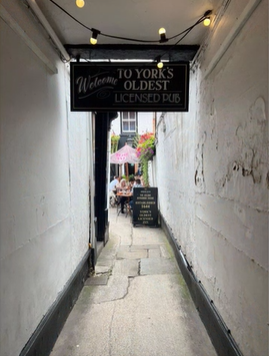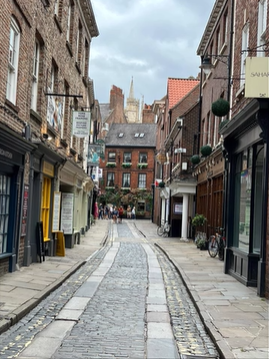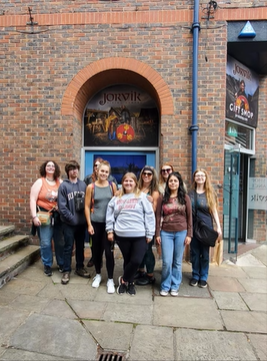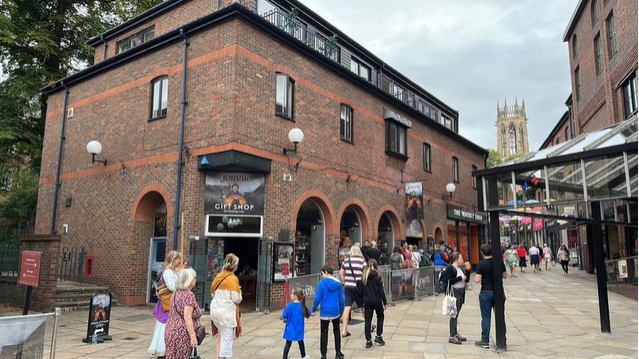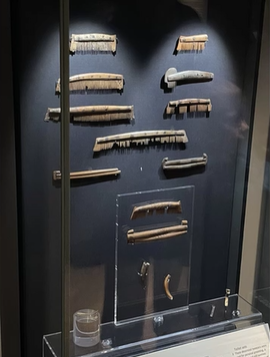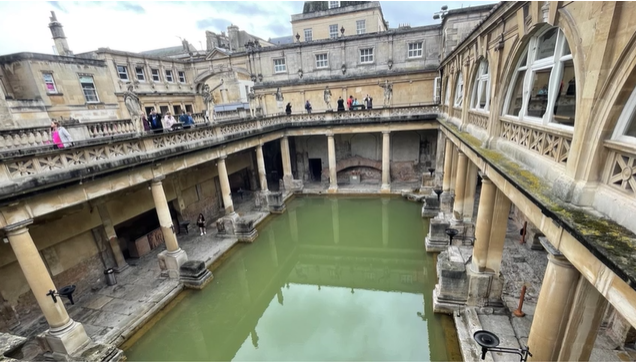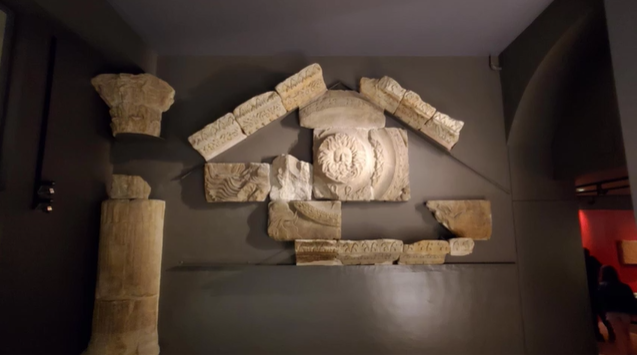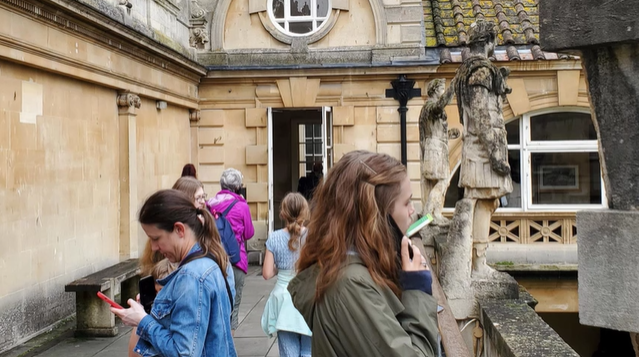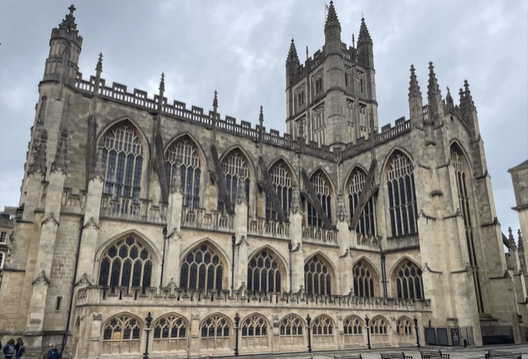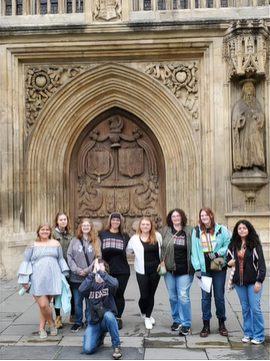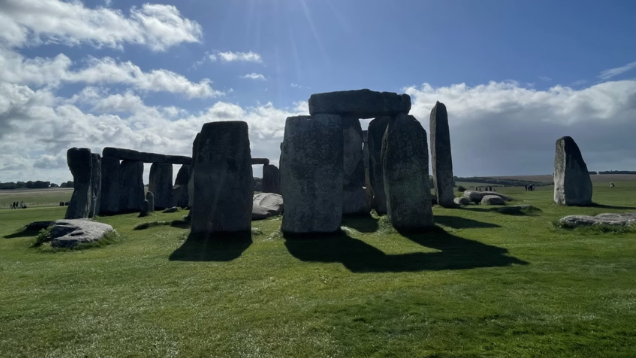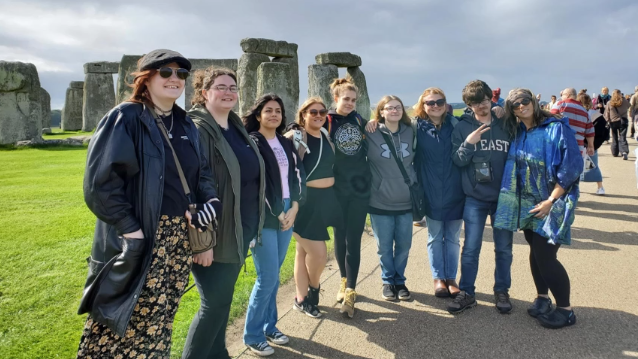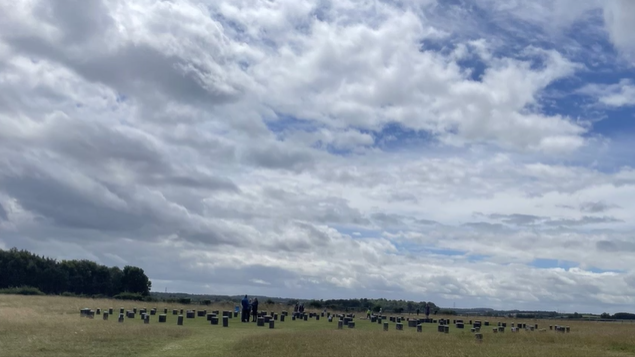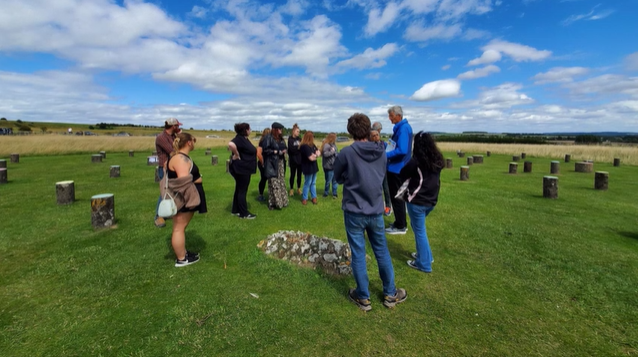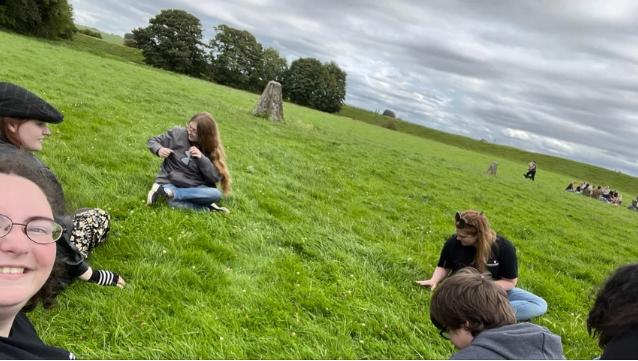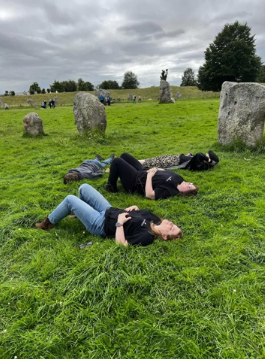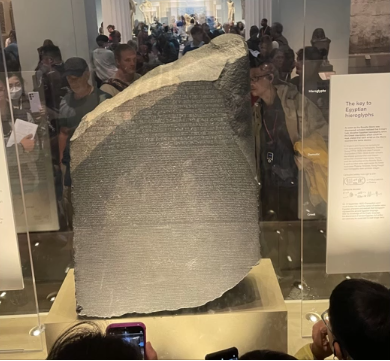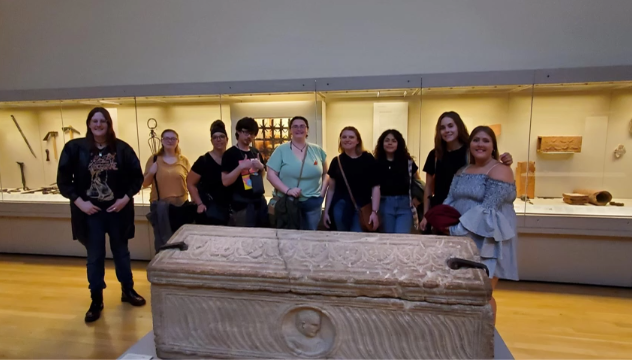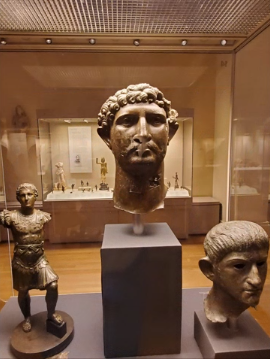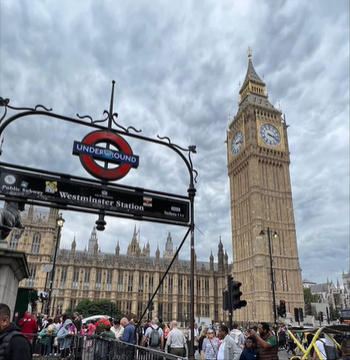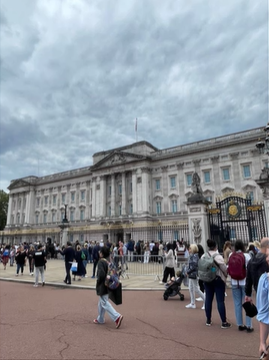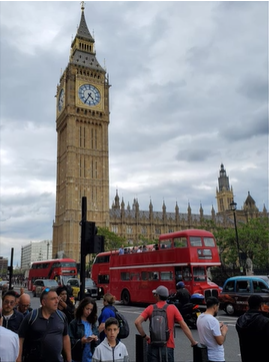5 Summer 2023: Ancient Cultures of England and Scotland
Sociology/Anthropology course taught by Dr. Denise Bullock and Dr. Aaron Comstock.
July 22, 2023 to August 4, 2023

Arriving in Inverness, Scotland
Clava Cairns
The first sight the students visited was the 4,000 year old cemetery, Clava Cairns.
Culloden Battlefield and Museum
Students next visited the Culloden Battlefield and museum. The battlefield hosted the final battle of the Jacobite Uprising in 1746, where highland warriors fought in support of the Jacobite rebellion. The Jacobite Uprising was a political conflict, in which Prince Charles Edward Stuart battled the Duke of Cumberland and his forces to try and regain the throne.
Loch Ness Cruise
Loch Ness is the largest Ness in Scotland based on volume. Students enjoyed an educational cruise on the Ness.
Corrimony Chambered Cairn and Cairn Laith Broch
Students visited two more Cairns, the Corrimony Chambered Cairn and Cairn Laith Broch.
Skara Brae
After taking a ferry to the Orkney Islands, located off the northeast coast of Scotland, students visited the ancient village of Skara Brae. It is largely regarded as the best preserved Neolithic village in Europe, and is around 5,000 years old. Students were also able to explore a museum of Skara Brae’s history and a replica Neolithic house.
Ring of Brogdar
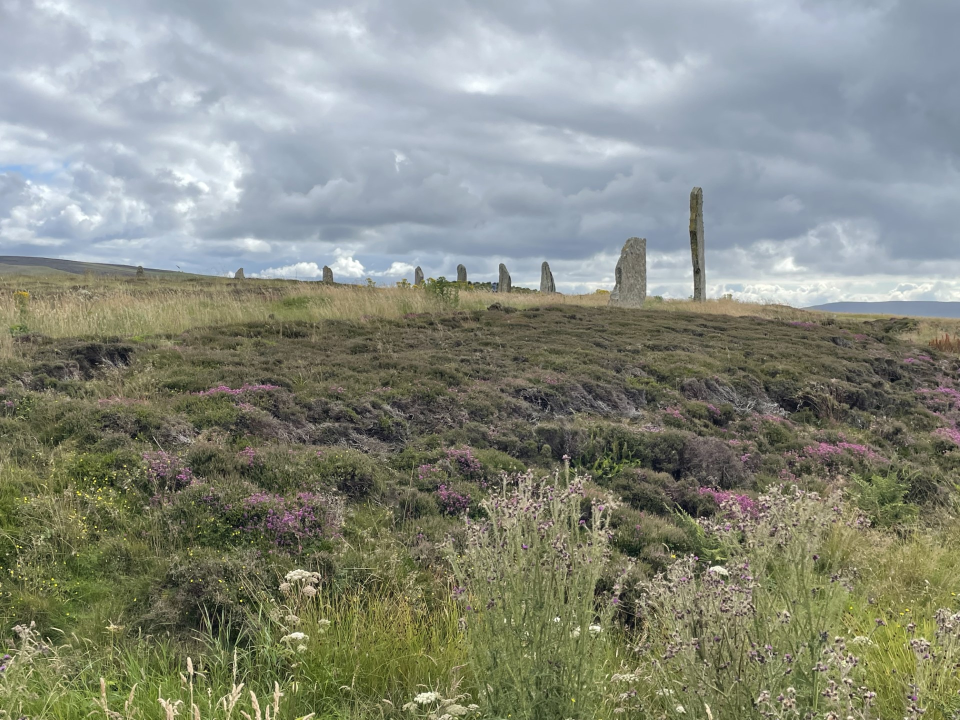
A stone circle henge consisting of 36 remaining standing stones.
Ness of Brogdar
Students were able to visit a live excavation and hear a talk from archaeologists at the Ness of Brogdar.
Standing Stones of Stenness
Another circle of standing stones on the Orkney Islands.
Train from Scotland to England
Students spent a day traveling via train out of Scotland and into England, arriving finally at Newcastle Upon Tyne.
Roman Army Museum
Students explored the Roman Army Museum to learn more about the Roman Army in England.
Vindolanda
At Vindolanda, students toured a large excavated Roman fort and the accompanying museum. Students also were able to see a live excavation and interact with archaeologists at Vindolanda.
Hadrian’s Wall and Housesteads
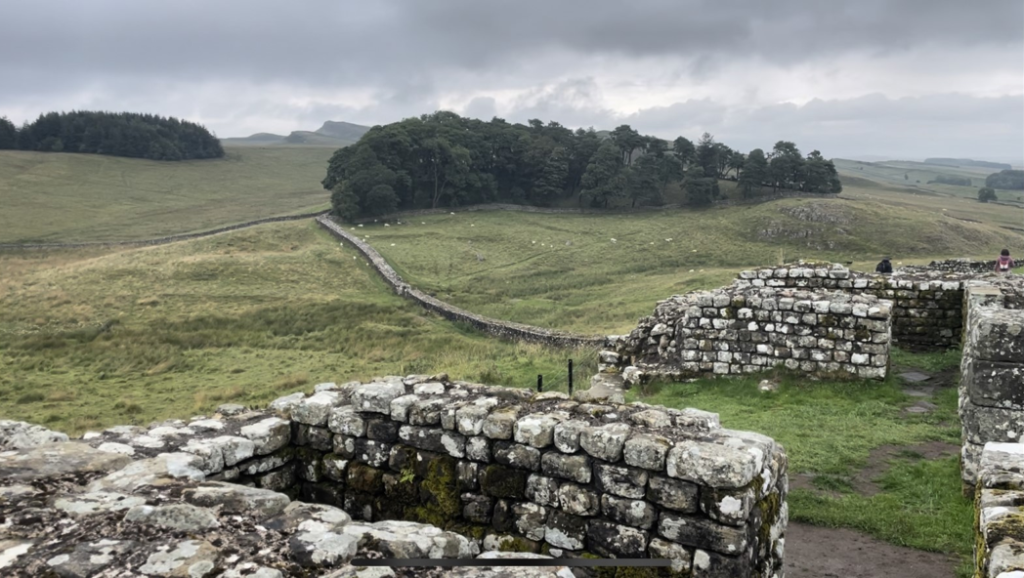
Students visited Hadrian's Wall, which was built by Roman Emperor Hadrian to provide protection from the north, and as a demonstration of Roman power. Construction began in 122CE and finished six years later, with the wall spanning 73 miles. Housesteads is a nearby Roman fort, which students had the opportunity to explore while visiting Hadrian’s Wall.
York Minster
Students visited York Minster, an immaculately preserved gothic cathedral. York Minster is also the largest gothic building in Britain.
River Cruise
Students enjoyed a cruise over the River Ouse in York, during which they learned more about the city.
The Shambles
Students also had the opportunity to go shopping in the historic Shambles shopping district. The Shambles dates back to the 14th century, with timber framed buildings and cobblestone, located in the old area of York.
Jorvik Viking Center
Students toured the Jorvik Viking Center, in which they learned about the Viking invasion and occupation of the city of York. This included a museum, gift shop, and an immersive ride which simulated life in York, or Jorvik as it was known at the time, during the Viking occupation.
Roman Baths
Students toured the Roman Baths, which were built in 50CE, and the accompanying museum. While unable to touch the water in the baths themselves, students had the opportunity to taste the spring water which would eventually flow into the baths, as well as view holographic replicas of life in the Baths.
Bath Abbey
Students explored the historic Bath Abbey.
Stonehenge
Students visited Stonehenge, one of the most famous prehistoric monuments in England, and the Stonehenge Visitor Center.
Woodhenge
Students were able to visit Woodhenge, which is a henge constructed of wooden poles instead of stones. Today, the locations of the former wooden poles are marked by concrete posts.
Silbury Hill

Students also had a chance to visit Silbury Hill on the way to the Avebury site.
Avebury
Students had an opportunity to explore Avebury, another henge. However, at Avebury, students could walk up to the stones and touch them, which was not possible at the other henges.
British Museum
Students explored the British Museum as a class after travelling to London.
Free day in London
For the final day of the trip, students were allowed to explore London on their own, with the opportunity to use the tube to visit sites such as the London Eye, Big Ben, the British Museum and other surrounding museums, Hyde Park, the Thames, and more.
Photo Credits
Attributions listed alphabetically:
Stacia Barnes
Dr. Denise Bullock
Dr. Aaron Comstock
Sarah Conner
Makena Elmore
Nikole Meadows
Clava Cairns is an early Bronze Age site in Scotland, located east of the city of Inverness, consisting of three well-preserved cairns (two of which are passage graves) and a number of free-standing stones strategically placed for astronomical purposes.
Source: World History Encyclopedia
https://www.worldhistory.org/Clava_Cairns/
Marking the spot of the last major battle on British soil, the wild moor at Culloden is the resting place of 1,500 Jacobite and 50 Government soldiers who fought and died here in 1746.
Source: National Trust for Scotland https://www.nts.org.uk/visit/places/culloden/highlights/battlefield
Loch Ness, lake, lying in the Highland council area, Scotland. With a depth of 788 feet (240 metres) and a length of about 23 miles (36 km), Loch Ness has the largest volume of fresh water in Great Britain.
Source: Britannica
https://www.britannica.com/place/Loch-Ness-lake-Scotland-United-Kingdom
Scotland, most northerly of the four parts of the United Kingdom, occupying about one-third of the island of Great Britain.
Source: Britannica
https://www.britannica.com/place/Scotland
Corrimony Chambered Cairn is a ‘Clava type’ cairn in a remarkable state of preservation.
Source: Historic Environment Scotland
https://www.historicenvironment.scot/visit-a-place/places/corrimony-chambered-cairn/
Carn Liath is a broch, a sophisticated type of Iron Age settlement accompanied by the rare survival of an associated village and earthworks.
Source: Historic Environment Scotland
https://www.historicenvironment.scot/visit-a-place/places/carn-liath-broch/
Orkney Islands, group of more than 70 islands and islets—only about 20 of which are inhabited—in Scotland, lying about 20 miles (32 km) north of the Scottish mainland, across the strait known as the Pentland Firth.
Source: Britannica
https://www.britannica.com/place/Orkney-Islands
Skara Brae, one of the most perfectly preserved Stone Age villages in Europe, which was covered for hundreds of years by a sand dune on the shore of the Bay of Skaill, Mainland, Orkney Islands, Scotland.
Source: Britannica
https://www.britannica.com/place/Skara-Brae
Neolithic, final stage of technological development in the Stone Age. It was characterized by stone tools shaped by polishing or grinding, dependence on domesticated plants and animals, settlement in permanent villages, and the appearance of such crafts as pottery and weaving.
Source: Britannica
https://www.britannica.com/event/Neolithic
England, predominant constituent unit of the United Kingdom, occupying more than half of the island of Great Britain.
Source: Britannica
https://www.britannica.com/place/England
Newcastle upon Tyne, city and metropolitan borough, metropolitan county of Tyne and Wear, historic county of Northumberland, northeastern England. It lies on the north bank of the River Tyne 8 miles (13 km) from the North Sea.
Source: Britannica
https://www.britannica.com/place/Newcastle-upon-Tyne-England
Hadrian’s Wall, continuous Roman defensive barrier that guarded the northwestern frontier of the province of Britain from barbarian invaders.
Source: Britannica
https://www.britannica.com/topic/Hadrians-Wall
Hadrian (born January 24, 76 ce—died July 10, 138, Baiae [Baia], near Naples [Italy]) was a Roman emperor (117–138 ce), the emperor Trajan’s cousin and successor, who was a cultivated admirer of Greek civilization and who unified and consolidated Rome’s vast empire.
Source: Britannica
https://www.britannica.com/biography/Hadrian
Lying midway along Hadrian’s Wall, Housesteads is the most complete example of a Roman fort in Britain, and one of the best-known from the entire Roman Empire.
Source: English Heritage
https://www.english-heritage.org.uk/visit/places/housesteads-roman-fort-hadrians-wall/history/
York Minster, Gothic-style cathedral in York, North Yorkshire, England, U.K., that is the seat of the archbishop of York.
Source: Britannica
https://www.britannica.com/place/York-Minster
River Ouse, river in north-central England, draining the central Pennines (via its tributaries) and the Vale of York.
Source: Britannica
https://www.britannica.com/place/River-Ouse-northern-England
Roman Baths, well-preserved public bathing facility built about 70 CE on the site of geothermal springs in Roman Britain, now in Bath, England, U.K.
Source: Britannica
https://www.britannica.com/place/Roman-Baths
Stonehenge, prehistoric stone circle monument, cemetery, and archaeological site located on Salisbury Plain, about 8 miles (13 km) north of Salisbury, Wiltshire, England.
Source: Britannica
https://www.britannica.com/topic/Stonehenge
...Silbury Hill, at 130 feet (40 metres) high the largest prehistoric mound in Europe, was not used as a burial site, and the reason for its construction remains unknown.
Source: Britannica
https://www.britannica.com/place/Avebury-archaeological-site-England#ref643867
Avebury, archaeological site in Kennet district, administrative and historic county of Wiltshire, England, some 18.5 miles (30 km) north of Stonehenge.
Source: Britannica
https://www.britannica.com/place/Avebury-archaeological-site-England#ref643867
British Museum, in London, comprehensive national museum with particularly outstanding holdings in archaeology and ethnography.
Source: Britannica
https://www.britannica.com/topic/British-Museum
London, city, capital of the United Kingdom. It is among the oldest of the world’s great cities—its history spanning nearly two millennia—and one of the most cosmopolitan.
Source: Britannica https://www.britannica.com/place/London
London Eye, revolving observation wheel, or Ferris wheel, in London, on the South Bank of the River Thames in the borough of Lambeth.
Source: Britannica
https://www.britannica.com/place/London-Eye
Big Ben, tower clock, famous for its accuracy and for its massive bell.
Source: Britannica
https://www.britannica.com/topic/Big-Ben-clock-London
Hyde Park, park in the borough of Westminster, London. It covers more than 340 acres (138 hectares) and is bordered on the east by Mayfair and on the west by Kensington Gardens.
Source: Britannica
https://www.britannica.com/place/Hyde-Park-London
River Thames, chief river of southern England.
Source: Britannica
https://www.britannica.com/place/River-Thames



